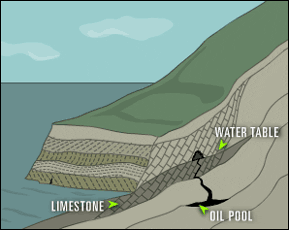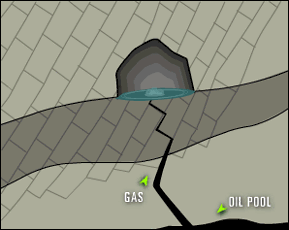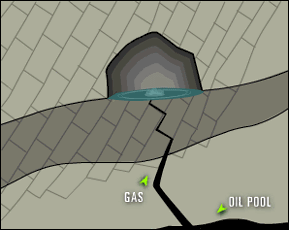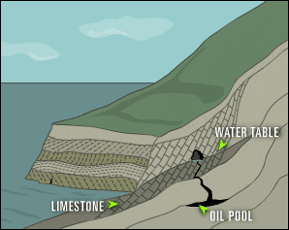|
 Cave-Making Agent: Bacteria
Cave-Making Agent: Bacteria

|
Most limestone caves are dissolved into existence by carbonic
acid, a mixture of carbon dioxide and water.
Some, however, are created by a more corrosive acid—one
that results from bacteria deep within the Earth, feeding off
oil deposits.
|

|

|

|
|
These bacteria, called extremophiles because they live in
extreme conditions, expel hydrogen sulfide gas. This gas is
carried up by groundwater into the cave.
The hydrogen sulfide mixes with oxygen to form sulfuric acid.
The corrosive acid eats away at the limestone rock, leaving
behind gypsum.
|

|

|

|
|
Bacteria also live within some of these pitch-black caves.
Unlike their cousins in the oil deposits, these bacteria feed
off the hydrogen sulfide, combining it with oxygen to form
even more sulfuric acid. Other types of microbes eat minerals
within the rock—sulfur and manganese, for
example—accelerating even further the cave-eating
process.
|

|

|

|
|
Lechuguilla Cave in New Mexico, most of whose 100-miles-plus
passages have been discovered only since 1986, bore all the
signs of being carved out by sulfuric acid, though there was
no acid still present within the cave and thus no proof that
it was the catalyst. Several years ago, scientists found
bacteria and the acid it generated in Mexico's Cueva de Villa
Luz (Cave of the Lighted House), still alive, still working on
the caves walls.
Choose another way that caves can form.
|

|

|

|
|
|

